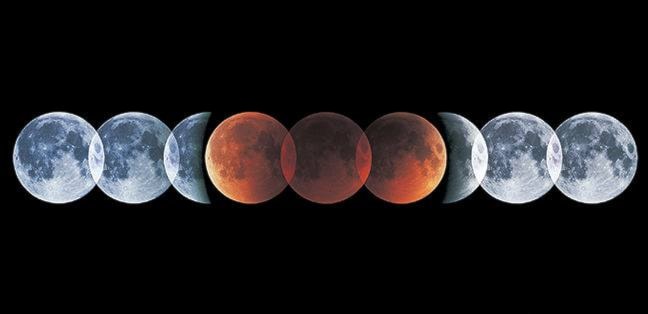Dave Hogson
Special to the Record
For the Comox Valley, a total eclipse of the moon will be visible on Wednesday Oct. 8.
The moon enters our planet’s shadow at 2:14 a.m., PDT, when the first obvious shadowy bite appears on the limb of the moon.
Over the next 71 minutes of the partial eclipse, the moon moves more deeply into the umbral shadow.
By 3:25 a.m., the moon is completely covered in the Earth’s shadow.
For the next 59 minutes the moon will appear orange to deep red as it is lit by red sunlight filtering through the Earth’s atmosphere.
The red tint is a sign that we have an atmosphere.
At this eclipse the moon passes north of the umbra’s centre.
This means the northern, or top, edge of the moon will appear brighter than the southern limb closer to the dark umbral centre.
At 4:24 a.m., the moon begins to emerge from the umbra as totality ends.
Another 70 minutes of the partial phase rounds off the nearly three hour event.
From Western Canada, observers can enjoy the sight of the eclipsed moon fairly high in the western sky. If possible, view and photograph the eclipse from a dark site.
For the best view of the subtle colour variations across the disc of the moon, use binoculars or a low-power telescope.
Two weeks after the lunar eclipse, a partial eclipse of the sun occurs on the afternoon of Thursday, Oct. 23. Beginning at 1:52 p.m. maximum eclipse, where nearly 70 per cent of the sun is covered, occurs at 4:35 p.m. and the eclipse ends at 5:44 p.m.
Precautions should be taken when observing the sun.
For more information on observing solar eclipses safely, visit bit.ly/1x4jjYa.
Live streaming coverage of both eclipses will be supplied by Columbus State University’s Coca-Cola Space and Science Center.
Visit www.ccssc.org/webcast.html
For more information on the eclipses, and to see reader-submitted photo galleries, go to www.skyandtelescope.com/
